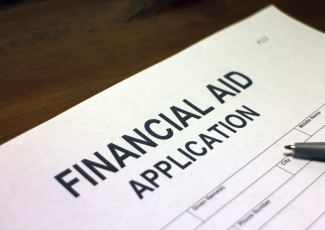College Teaches Financial Literacy
By Emily Rogan
June 9, 2016
A peer-to-peer financial literacy program at Valencia College is helping to reduce the student-loan default rate.
Back in 2009, Ilia Cordero was worried.
“Our default rate was very high, and many students didn’t have a basic understanding about their finances,” says the assistant director of financial aid services at Florida’s Valencia College. “They weren’t given information about how to spend the money they were given from their federal grants for their expenses.”
So the financial aid office had three work-study students don lime-green T-shirts and set up a table outside the office to chat with classmates about how to wisely use their financial aid, manage and save money and better understand their expenses.
This was the beginning of Valencia’s Financial Learning Ambassadors (FLA) program. The program expanded when the college was awarded a three-year, $25,000 grant from USA Funds, a nonprofit that provides students with financial support for higher education. Three to six ambassadors now provide peer-to-peer financial literacy support at each of Valencia’s five campuses. By 2013, the ambassadors had interacted with over 5,000 students.
The interactions appear to be paying off: Valencia has reduced its student-loan default rate from 20.3 percent in 2011 to 14.9 percent in 2013 (the last time data were available). The college’s financial aid officers believe FLA has played a part in this reduction.
How the program works
The ambassadors are paid through the federal work-study program, and they benefit from their training and experience as much as the students they assist. To prepare, they go through a rigorous financial literacy program, participate in team-building activities and learn how to give presentations to both large and small groups.
After the training, ambassadors are invited into first-year classrooms to give financial literacy presentations as part of the life-skills curriculum. They also engage their peers through other campus activities:
- Students sign contracts agreeing to save $10 to $20 per month in a piggy bank provided by the FLA. The student who saves the most wins a gift card.
- Students participate in Skillshops, a monthly group that provides information on budgeting, saving and handling credit.
- When graduating students pick up their caps and gowns, ambassadors are there to talk about loan repayment and debt management.
Having peer mentors share the information is empowering, Cordero says. “When you hear a peer say to another peer, ‘Do you save money or a portion of your paycheck?’ When it’s someone their age, that knows their struggles, it’s different than coming from an administrator or someone from a bank.”
Many of Valencia’s students are from low-income homes and are the first to attend college; their families often lack the knowledge or experience to teach the children about managing financial aid and budgeting. The FLA program aims to provide that assistance so students complete their programs.
“A key component to retention is financial,” Cordero says. “Many drop out because of money — they can’t afford it.”
A multipronged attack
In 2012, the college also formed a Default Prevention Advisory Committee, says Sedrick Brinson, a financial aid specialist at Valencia. The committee sends personalized letters to students who have loan debt, spelling out payment options, and provides information about student-loan services for transfer students who arrive with debt.
“They hear ‘free money’ when in fact it’s a loan that must be paid back,” Brinson says. “They need to have financial stability before they get into the real-world working environment.”
Recently, the ambassadors spent a day teaching financial literacy to K–12 students through a partnership with Junior Achievement. “The kids look at them like they’re heroes,” Cordero says. “It will help the community as a whole.”






